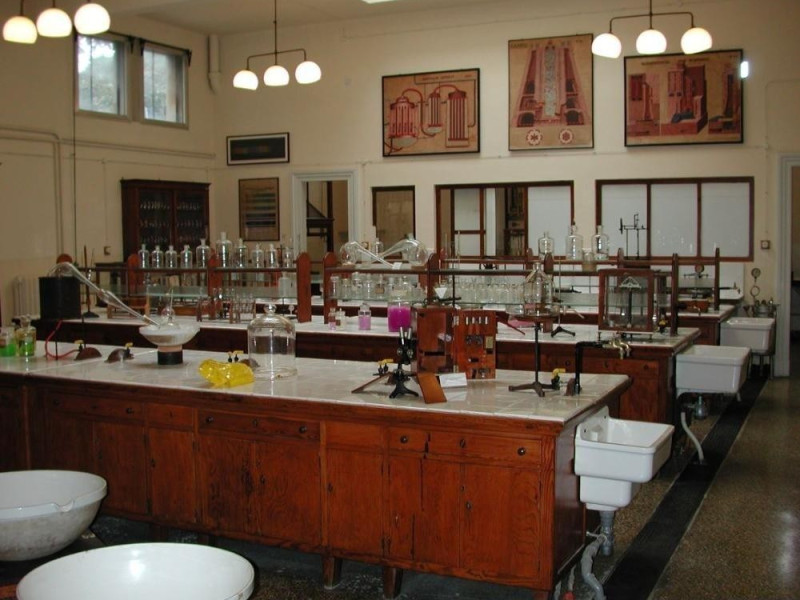Museo di chimica di Genova
A first nucleus of the Museum of Chemistry consisted of different materials (tools, collections of books, documents, etc.) which, over the years, were accumulated by the Institute of General Chemistry, in via Balbi first and then viale Benedetto XV, 3.
The collections of books, including milestones in the evolution of chemical disciplines, have generally been transferred to the antiquarian section of the library, attached to the current Department of Chemistry and Industrial Chemistry (Center for Library Services of Chemistry "S. Cannizzaro"). A significant amount of material, acquired during more than 150 years, consists of instruments and glassware for both research and teaching. Interesting are, for example, several small devices used to illustrate a lesson, from the chair to carry out some crucial experiments, such as apparatus used, according to Lavoisier, for the analysis of air, and respectively of water, or for the measuring the gaseous state of the density of a substance, and therefore its molecular weight. In the early 90s was initiated the restore, recovery and reorganization of this material by Prof. Richard Ferro, Director of the Institute of General Chemistry. This work was mainly carried out by Prof. G.Rambaldi, with the help of technical Mr A. Mori. The book published in 1996 by the same Prof. Rambaldi ("Istruments of Chemistry: a laboratory of the nineteenth century") describes the result of this restoration, conducted on a first large group of instruments, and the resulting classification, "Collection of tools chemical". This work was made possible following a generous contribution of the Region of Liguria and through its offices and its competent staff, that also suggested the creation of a permanent structure (a "Museum") for the conservation of collections and, together with the academic authority, wished to transform it into a museum laboratory, in which the tools can be arranged, connected together, according to their capabilities and possibly to function. This transformation was formalized with the official establishment of the Museum of Chemistry from the Department of Chemistry and Industrial Chemistry, by resolution of December 1999.
Among the material of different nature, existing in the Institute of General Chemistry and in the course of installation at the Museum, may be worthy of attention two groups of strumenti: the first one, dates back to the period of presence of Cannizzaro, consists of different glassware, small tools and some analytical balances. It's interesting to think that using these devices have been used in some of the fundamental bases of the atomic theory and chemistry, in general. The second one, goes back to the '30s and includes equipment used for the processing of minerals and metals of the rare earth elements. The aim was the identification, separation and preparation of the individual elements of this family. Large amounts of minerals and oxides have been processed and some of the products were pure metals (lanthanum, cerium, praseodymium, neodymium and samarium later) in quantities of the order of the kilogram. At the same time (with Professors Rolla, Mazza, Iandelli) were laid the foundations of a number of lines of research (chemistry of the alloys, crystal chemistry, magneto chemistry, thermochemical) that have developed in the following decades and in which they can reconnect some of the issues research currently being pursued in various sections of the Department. The equipment used inludes, small pilot plants, included several large capsules (up to 50 liters of capacity), and stoves for dissolving, decantation, crystallization and precipitation, vacuum filters, small plants for heating in a current of HCl gas (for the preparation of anhydrous chlorides), plants for the electrolysis in the molten state (DC converter, melting furnaces, etc.). This equipment was accompanied by a preparative analytical instrumentation quite exceptional for the time, including several spectrographs for UV and some of the first commercial X-ray equipment (high-voltage transformers, pipes closed and open generators and related equipment for high vacuum, spectrographs, rooms for diffraction). This set of tools is now only partly restored even for the large space that would be necessary for a functional its exposure.


